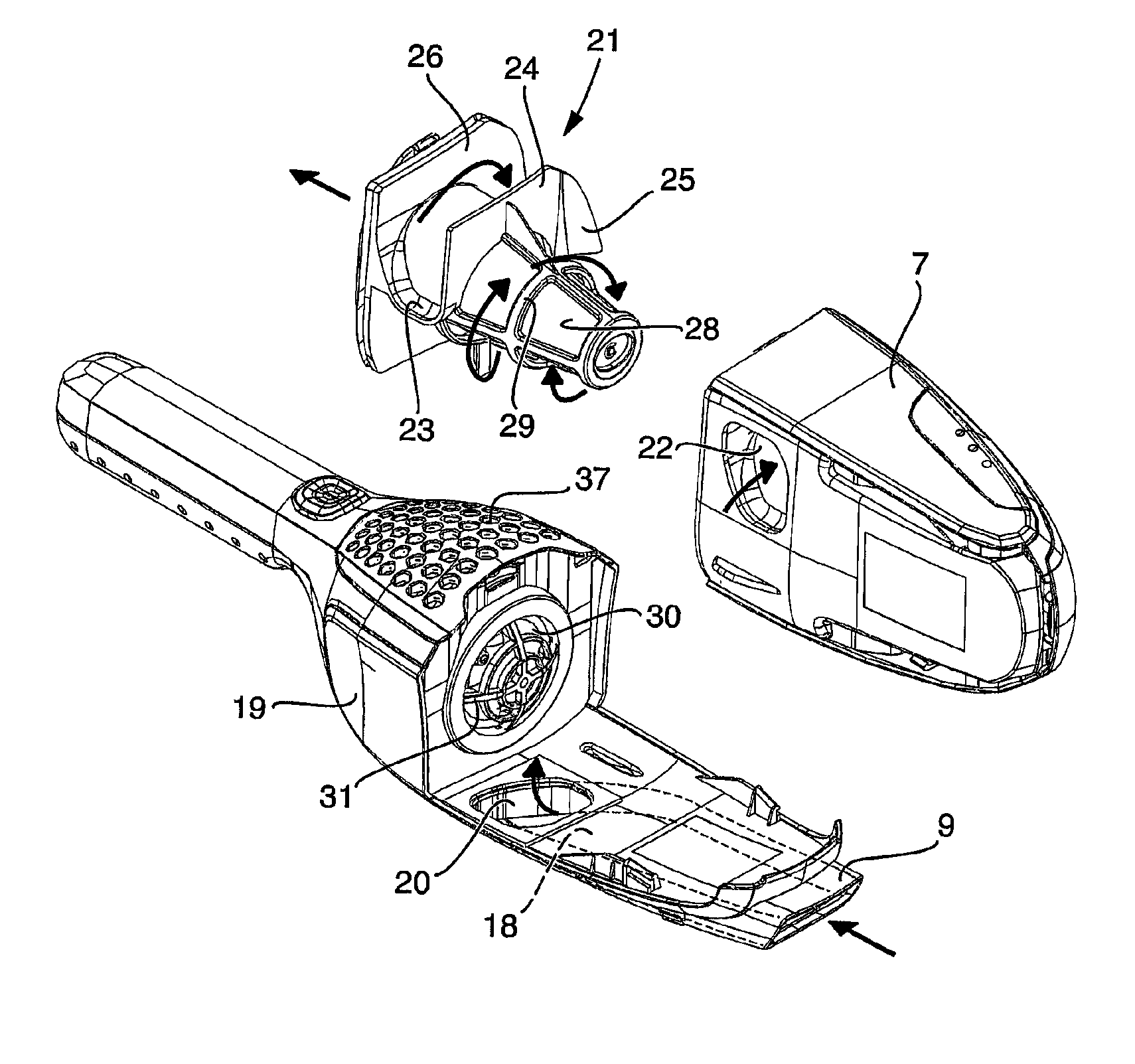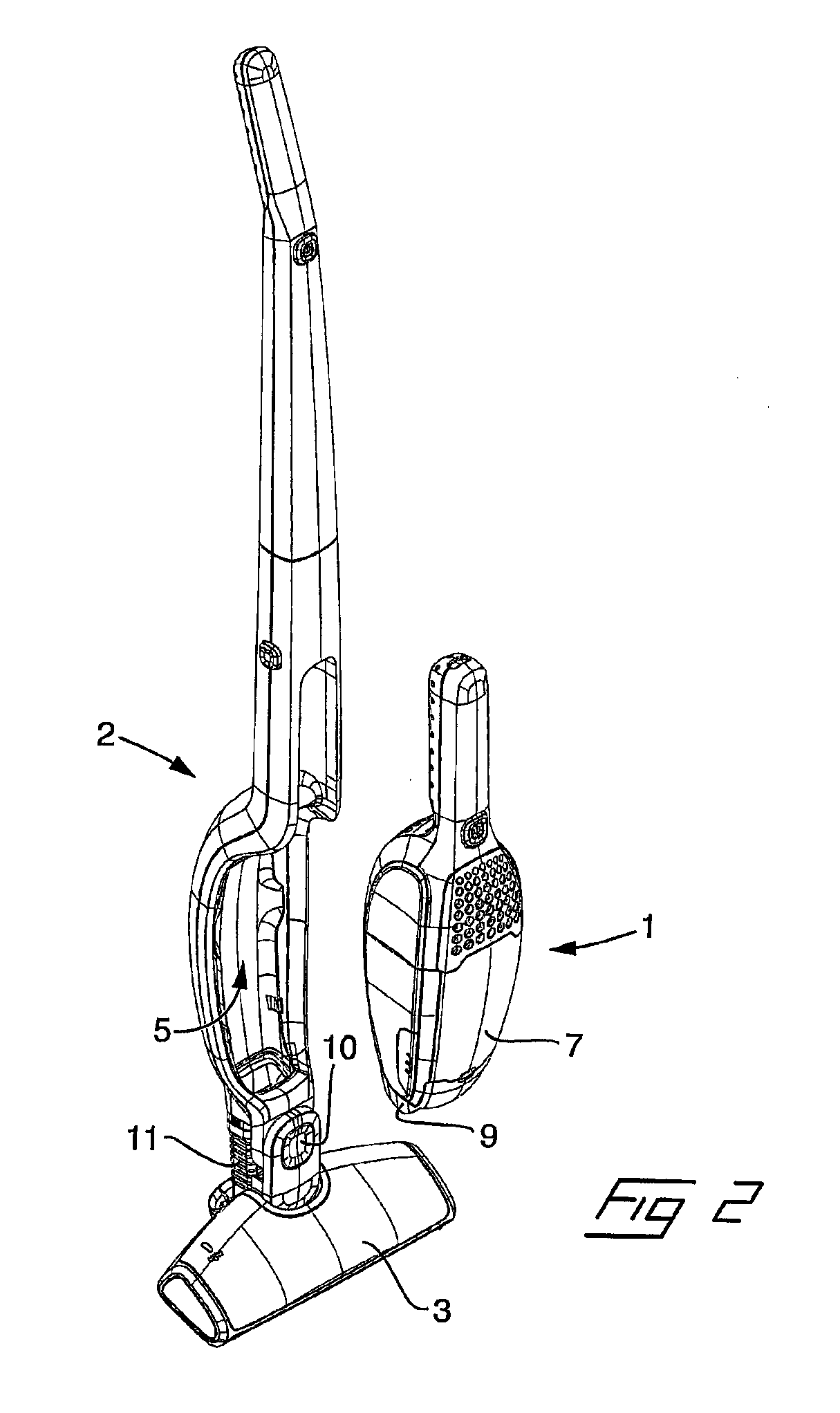Air Flow Losses in Vacuum Cleaners
a vacuum cleaner and air flow technology, applied in the direction of suction cleaners, cleaning filter means, suction hoses, etc., can solve the problems of limited machinery space, increased cost and weight of vacuum cleaners, etc., and achieve the effect of reducing air flow losses and improving suction efficiency
- Summary
- Abstract
- Description
- Claims
- Application Information
AI Technical Summary
Benefits of technology
Problems solved by technology
Method used
Image
Examples
Embodiment Construction
[0021]A vacuum cleaner of a 2-in-1 type, is shown in FIG. 1 in an assembled state and in FIG. 2 with a hand held unit 1 released from a stick-formed support body 2. The support body 2 comprises a nozzle device 3 in a lower end, a handle 4 in an upper end, and a recess 5 for accommodating the hand held unit 1. The hand held unit comprises an electrical motor, chargeable batteries, a fan unit driven by the electrical motor, a handle 6 and a cyclone-like separator including a debris container 7 for collecting debris and dust. The nozzle device 3 is of an ordinary, previously known kind, by means of which floors can be vacuum cleaned when the hand held unit 1 is inserted in the support body 2, in which case air is drawn by the fan unit from the nozzle device 3, through an air passage 8 in the support body 2, and into the hand held unit. When, on the other hand, the hand held unit is released from the support body, the hand held unit can be used separately to vacuum clean, for example, t...
PUM
 Login to View More
Login to View More Abstract
Description
Claims
Application Information
 Login to View More
Login to View More - R&D
- Intellectual Property
- Life Sciences
- Materials
- Tech Scout
- Unparalleled Data Quality
- Higher Quality Content
- 60% Fewer Hallucinations
Browse by: Latest US Patents, China's latest patents, Technical Efficacy Thesaurus, Application Domain, Technology Topic, Popular Technical Reports.
© 2025 PatSnap. All rights reserved.Legal|Privacy policy|Modern Slavery Act Transparency Statement|Sitemap|About US| Contact US: help@patsnap.com



